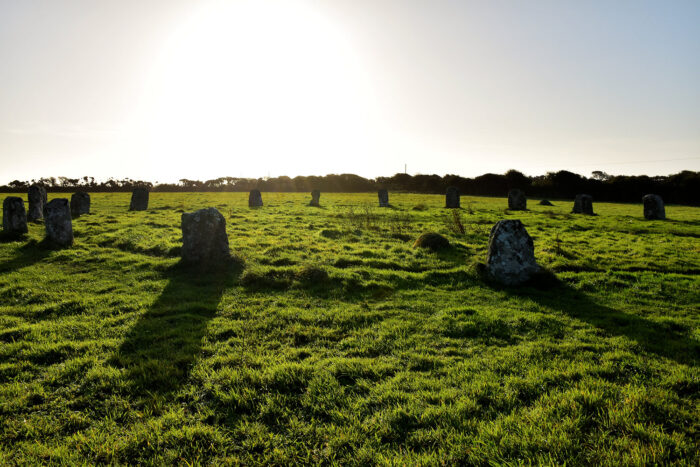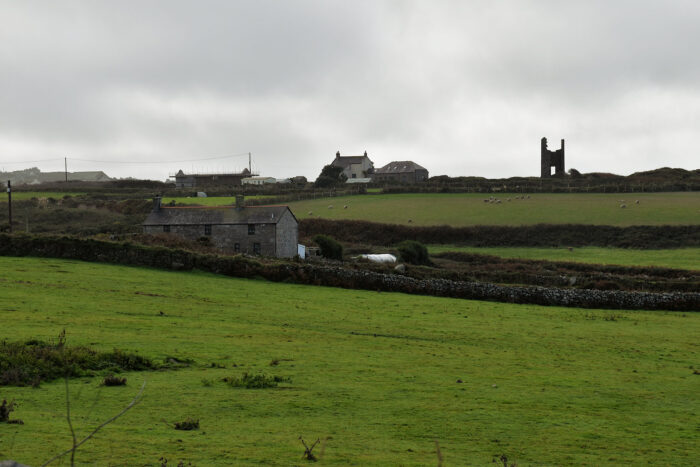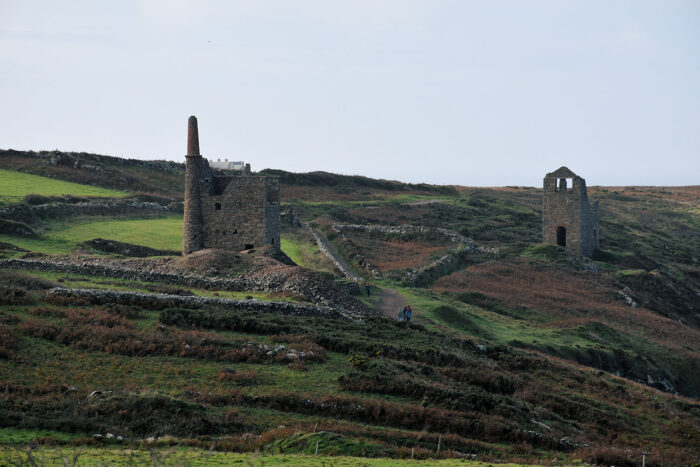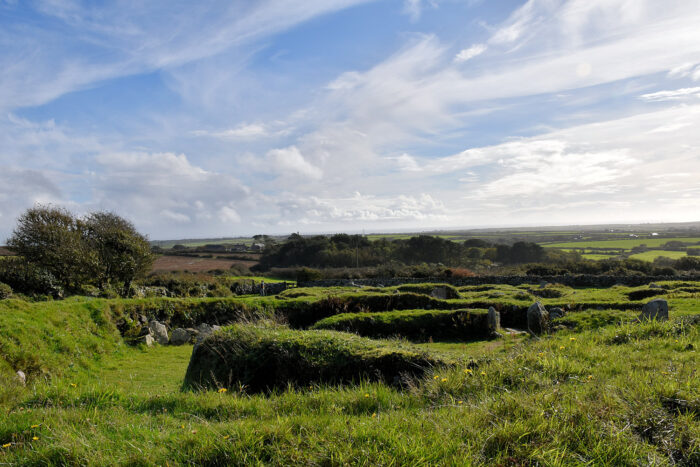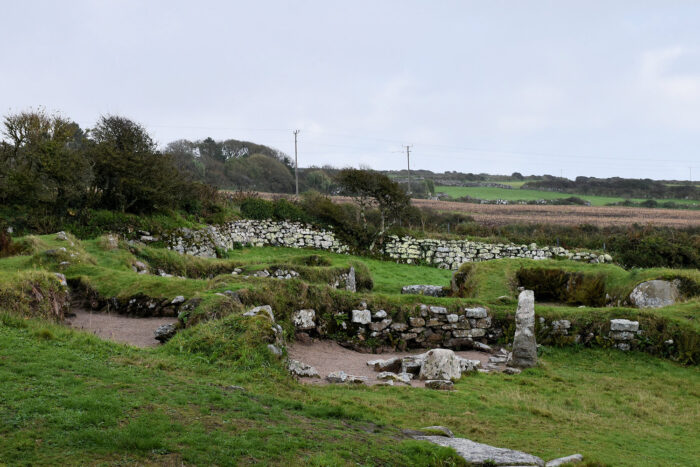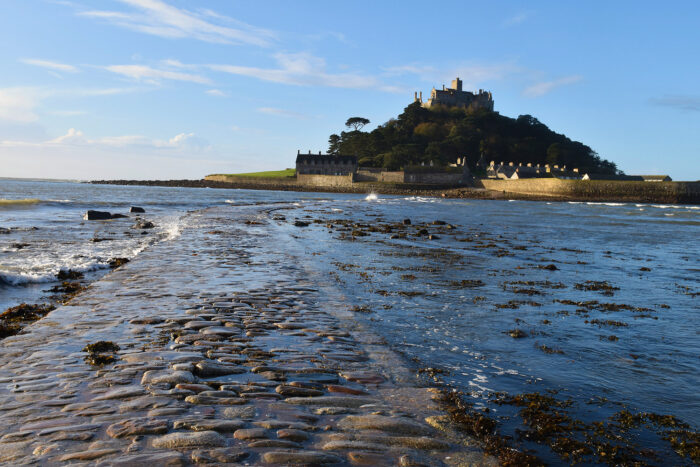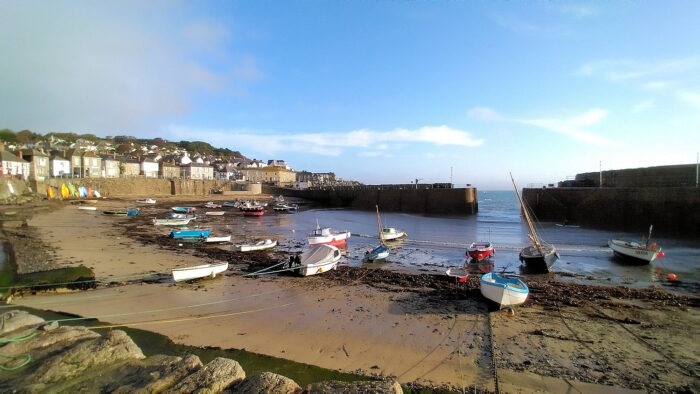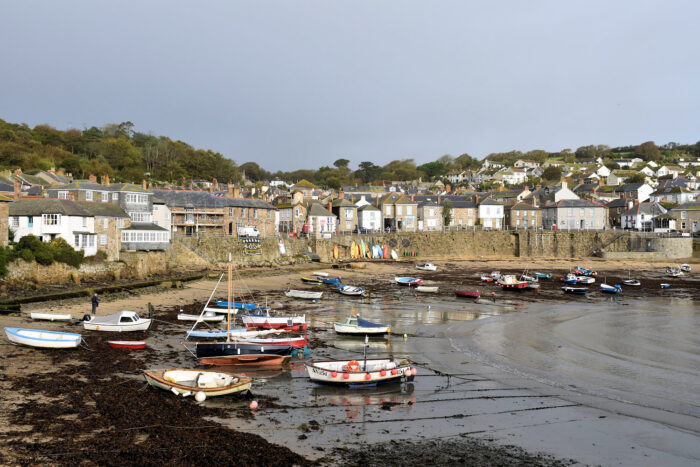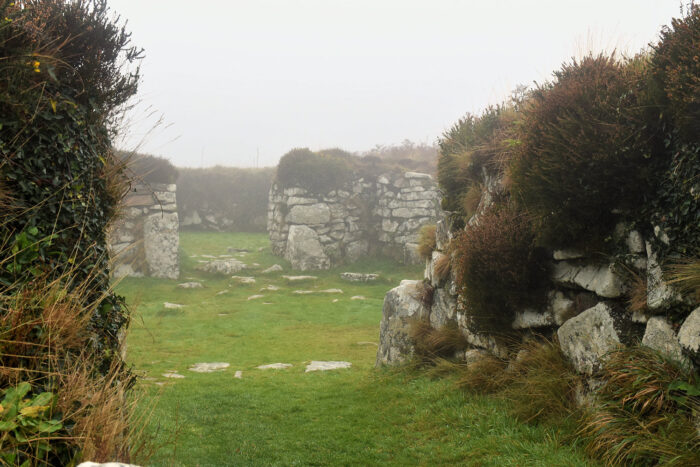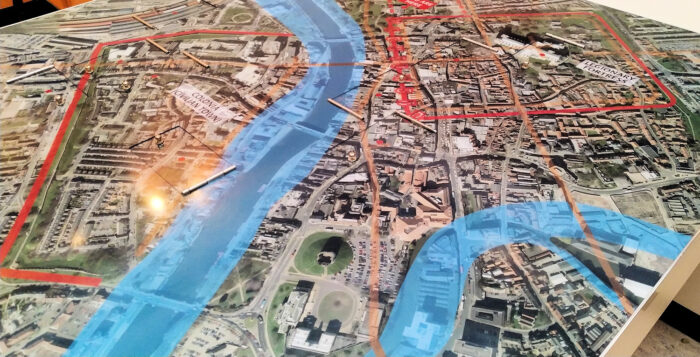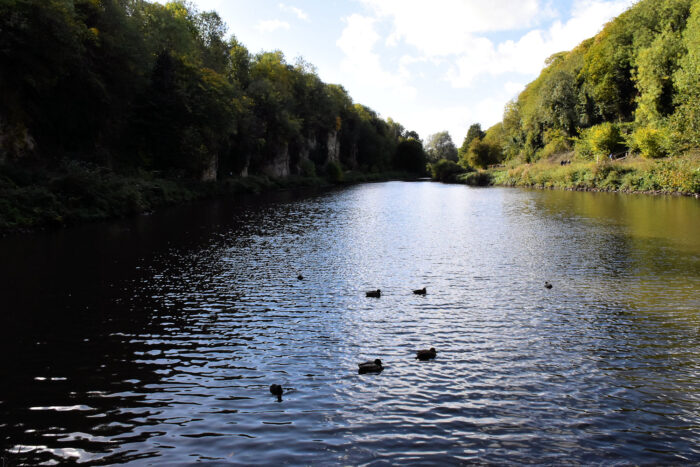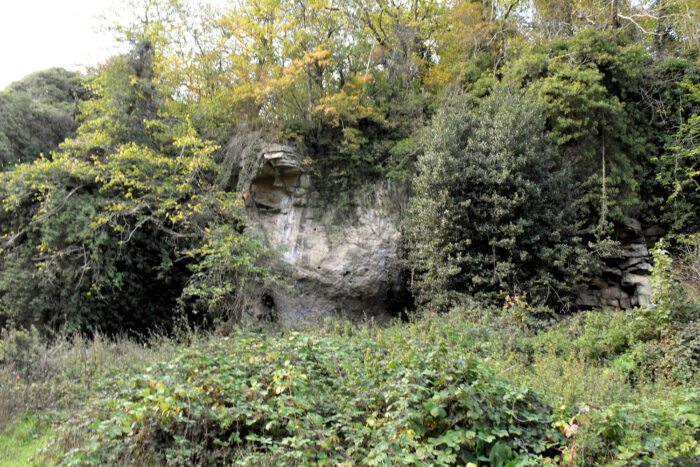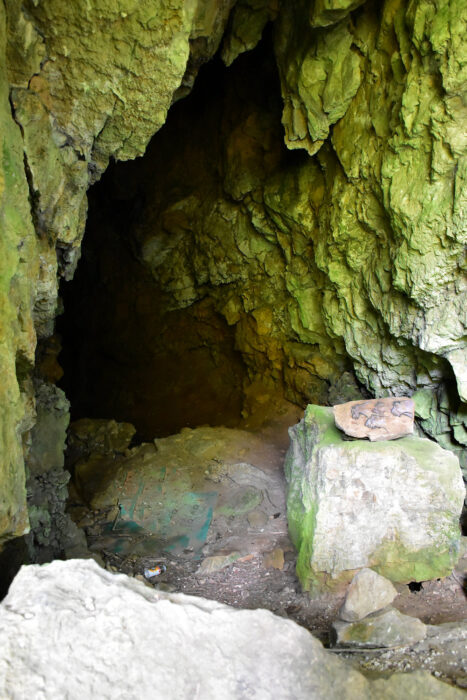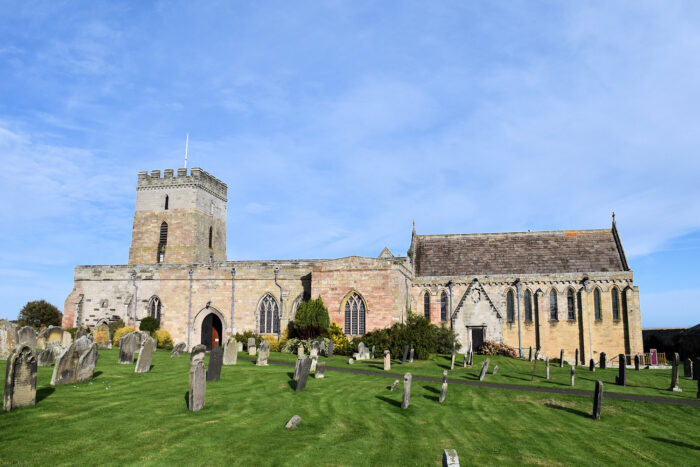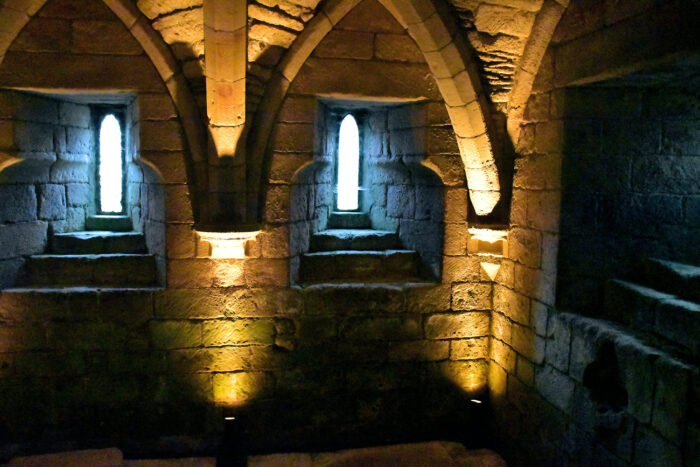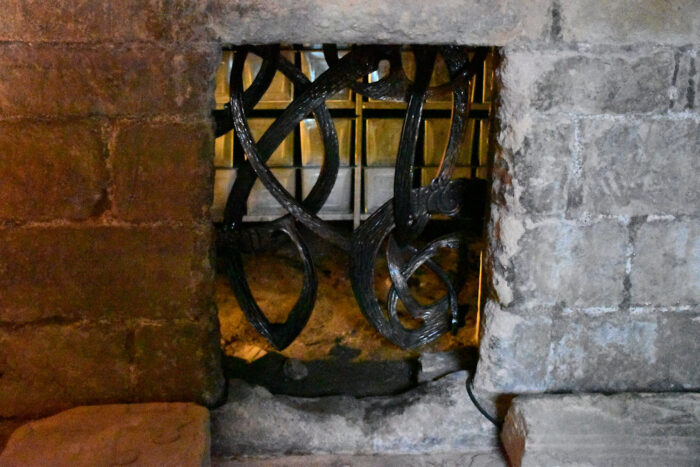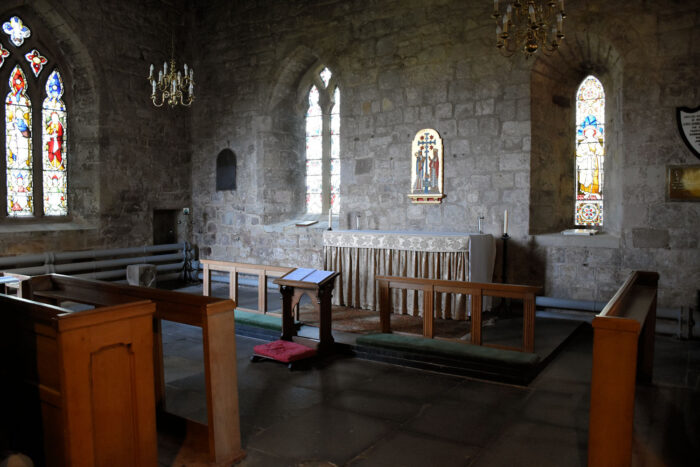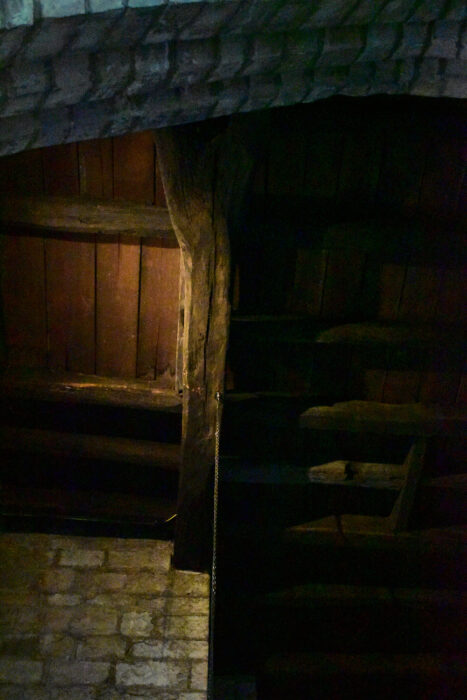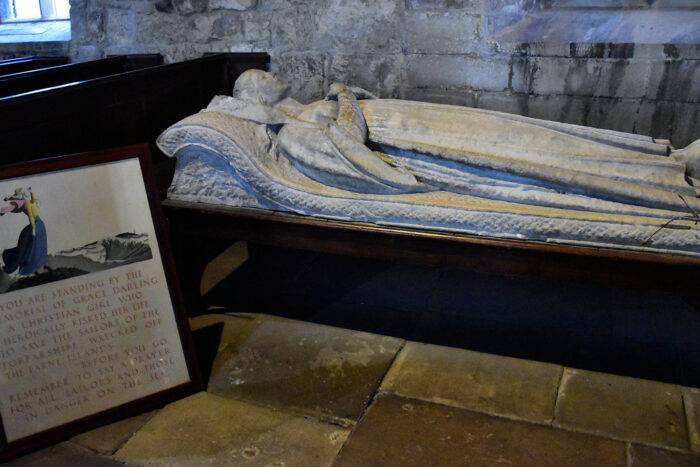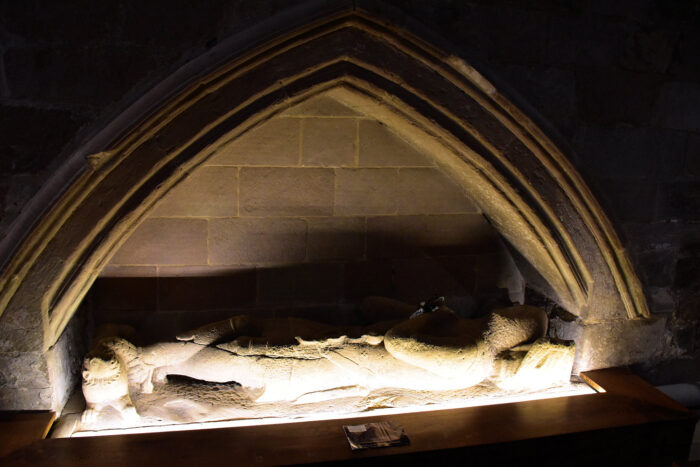About halfway between Penzance and Land’s End by bus, you’ll find this lovely stone circle in a field.
This late Stone/early Bronze Age (2500-1500BC) stone circle is renowned for both its beauty and the stories connected to it. . . . The regularity of spacing between stones and its truly circular form make the Boleigh Merry Maidens unusual in Cornwall, however restorations in the C19th (on the orders of the land owner Lord Falmouth who wanted to avoid the fate which had befallen other nearby circles and stones, namely field clearance and their use in construction) led to some stones being put back slightly skewed. There are 19 stones in all, with a gap in the eastern section which is common to almost all British stone circles. In addition to the regular spacing, the stones were also obviously carefully chosen and positioned as they gradually diminish in size from the southwest to the northeast; this waxing and waning in size believed to mirror the cycle of the moon.
Cornwall Guide
As you can see it’s early in the morning. There’s just me and nineteen stones in a perfect circle.

